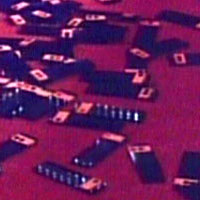Starfleet Academy
Quadrants

One quarter of the galaxy. The four quadrants were designated by the Greek letters Alpha, Beta, Gamma, and Delta, and were arbitrarily divided using Earth as a reference point. As a result, Earth, and the sector it occupied, fell in the Alpha Quadrant, while the sector containing Vulcan and Andoria fell in the Beta Quadrant. The Gamma and Delta Quadrants remained largely unexplored through the 25th century, though knowledge of those regions was greatly increased thanks to the Bajoran wormhole and the U.S.S. Voyager NCC-74656, respectively.[1]
› Continue reading
Milky Way Galaxy

Milky Way (TOS-01)
The Milky Way was a spiral galaxy approximately 100 thousand light years across, divided into four quadrants, designated by the Greek letters Alpha, Beta, Gamma, and Delta, and were arbitrarily divided using Earth as a reference point. As a result, Earth, and the Sol Sector, fell in the Alpha Quadrant, while the Vulcan and Andorian Sectors fell in the Beta Quadrant. The Gamma and Delta Quadrants remained largely unexplored by the early 25th century, though knowledge of those regions was greatly increased thanks to the Bajoran wormhole and the U.S.S. Voyager NCC-74656, respectively.[3] The galaxy was surrounded by a nearly-impenetrable energy field, dubbed the Galactic Barrier, with unpredictable neurogenic properties.[1, 3] Likewise, the core of the galaxy is surrounded by a distinct but related field, dubbed the Great Barrier.[2, 3]
› Continue reading
Sector 005
Also known as the Vulcan Sector, Sector 005 was adjacent to the Terran Sector, which was also known as Sector 001.[3] Inhabited systems include the 40 Eridani System.[1, 2]
References
Asteroid

Asteroid (TOS-58)
Small celestial body composed of rock and metal, typically much smaller than a planet, often irregularly shaped. Asteroids often occurred in orbital belts within a star system, sometimes the debris remaining from the formation of that system, other times the fragments remaining from the disintegration of a planet. Larger asteroids were sometimes called planetoids.
In 2267, the U.S.S. Enterprise NCC-1701 attempted to divert an asteroid that was on a collision course with an inhabited planet.[1] A Type-C asteroid crashed into an unpopulated continent of Penthara IV in 2367, threatening an ecological disaster until the U.S.S. Enterprise NCC-170-D helped dispel its dust cloud.[2] Another asteroid from the Pelloris Field threatened Tessen III with the same type of destruction in 2368 before it was vaporized by the same starship. Its nitrium alloy core prevented a tractor beam lock, and it was undamaged when hit by photon torpedoes. It was later discovered to be the home of metal parasites.[3]
› Continue reading
Chakotay
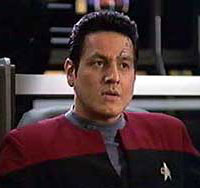
Chakotay (VOY-106)
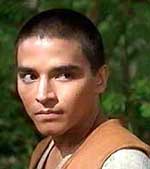
Young Chakotay (VOY-125)
Chakotay was born in 2335 on the colony world of Trebus, which had been settled generations before by Native American Humans in search of a new world on which they could return to their ancestral ways. (VOY-) In 2350, Chakotay traveled with his father, Kolopak, back to Earth. They searched throughout Central America for artifacts of their ancestors, the Rubber Tree People, who were descended from the Mayans. Throughout his youth, Chakotay had been disillusioned with his people’s culture, often rebelling against his father.[6]
› Continue reading
Talosians
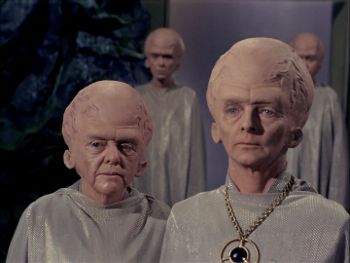
Talosians (TOS-00)
The Talosians were a humanoid species native to Talos IV and possessed enormous brains “three times the size” of average humanoids, according to U.S.S. Enterprise NCC-1701 Science Officer Spock. Veins in their heads would throb when using their telepathic abilities. According to Dr. Philip Boyce, “Their power of illusion is so great, we can’t be sure of anything we do, or anything we see.” The Talosians lived underground, and according to Vina, over the centuries following the near-destruction of their world in a nuclear war, the Talosians forgot how to repair the machines left behind by their ancestors, while concentrating on developing their mental abilities. They couldn’t read through “primitive” emotional states, such as anger. The Talosians also kept a zoo full of “descendants of life brought back long ago from all over [their] part of the galaxy.” These specimens included a primate-like creature and a avian-humanoid creature when Captain Christopher Pike was held by the Talosians in the 2250s. It was unclear if these creatures were sentient.[1]
Notable Talosians
References
- 1. “The Cage.” Star Trek, Episode 00. Television. 1965 (Unaired).
Humans
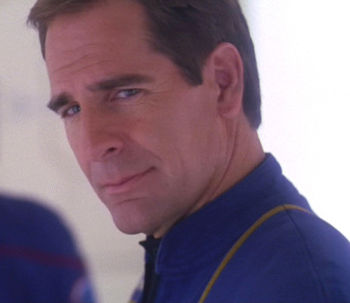
Jonathan Archer (ENT-31)
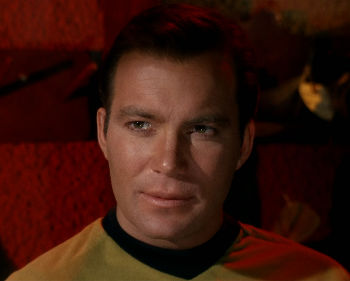
James T. Kirk (TOS-05)
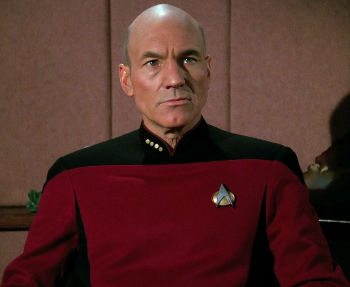
Jean-Luc Picard (TNG-165)
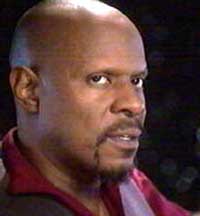
Benjamin Sisko (DS9-541)
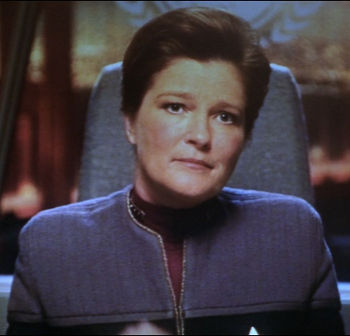
Kathryn Janeway (ST-10)
Species originating on Earth. According to the Talosians in the 2250s, “The customs and history of [Humans] show[s] a unique hatred of captivity. Even when it’s pleasant and benevolent, [they] prefer death. This makes [them] too violent and dangerous a species for [the Talosians’] needs.” The Talosians had scanned the U.S.S. Enterprise NCC-1701‘s databanks, and had gleaned quite a bit of information about Human history.[1]
Notable Humans
References
- 1. “The Cage.” Star Trek, Episode 00. Television. 1965 (Unaired).
- 2. “Where No Man Has Gone Before.” Star Trek, Episode 01. Television. 22 September 1966.
- 3. “Encounter at Farpoint.” Star Trek: The Next Generation, Episodes 101-102. Television. 28 September 1987.
- 4. “Emissary.” Star Trek: Deep Space Nine, Episodes 401-402. Television. 4 January 1993.
- 5. “Caretaker.” Star Trek: Voyager, Episodes 101-102. Television. 16 January 1995.
- 6. “Broken Bow.” Star Trek: Enterprise, Episodes 01-02. Television. 26 September 2001.
Dilithium
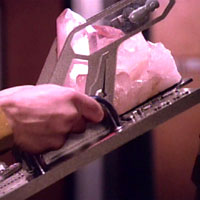
Dilithium (TNG-147)
Crystalline substance used in warp propulsion systems to regulate the matter/antimatter reactions that provide the energy necessary for faster-than-light speed. Naturally occurring dilithium was extremely rare and was mined on only a few planets, such as Coridan,[1] Troyius[2] and Rura Penthe.[4] In 2286, a method of recrystalizing dilithium was discovered, reducing the need for mining new deposits of the mineral.[3]
References
- 1. “Journey to Babel.” Star Trek, Episode 44. Television. 17 November 1967.
- 2. “Elaan of Troyius.” Star Trek, Episode 57. Television. 20 December 1968.
- 3. Star Trek IV: The Voyage Home. Film. 26 November 1986.
- 4. Star Trek VI: The Undiscovered Country. Film. 6 December 1991.
Computer Interface
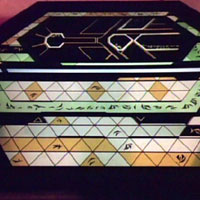
Custodian Controls (TNG-118)
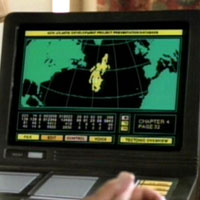
Computer Interface (TNG-178)

Holographic Computer Interface (TNG-107)
![]()
Iconic Display Console (TNG-193)
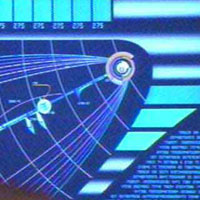
TCARS Interface (VOY-218)

Computer Interface (TNG-178)
Method of interacting with a computer system. The computers aboard the U.S.S. Enterprise NCC-1701 utilized tactile buttons and knobs, as well as motion-sensitive displays and consoles.[1] By the 24th century, touch-sensitive display panels had largely replaced the tactile interfaces,[2] though there were also some uses for holographic interfaces.[3]
References
- 1. “The Cage.” Star Trek, Episode 00. Television. 1965 (Unaired).
- 2. “Encounter at Farpoint.” Star Trek: The Next Generation, Episodes 101-102. Television. 28 September 1987.
- 3. “The Last Outpost.” Star Trek: The Next Generation, Episode 107. Television. 19 October 1987.
Categories
- Animated Series (60)
- Articles (28)
- Books (447)
- Cast & Crew (79)
- Comics (22)
- DS9 (328)
- Early Voyages (125)
- Education (5)
- Enterprise (373)
- Excelsior (36)
- Food (19)
- Games (223)
- Klingon (70)
- Library (1,543)
- Logs (593)
- Lost Era (55)
- Medicine (18)
- Merrimac (1)
- Mirror (35)
- Miscellaneous (13)
- New Frontier (54)
- Next Generation (635)
- Original Series (681)
- Personnel (436)
- Places (369)
- Politics (12)
- Recreation (10)
- SCE (41)
- Science (1)
- Shatnerverse (9)
- Ships (455)
- Site Updates (98)
- Starfleet Academy (86)
- Stargazer (42)
- STO (61)
- Technology (45)
- Titan (59)
- To Boldly Go (1)
- TV/Film (214)
- Uncategorized (4)
- Vanguard (76)
- Voyager (236)
- Weapons (27)
- Xenology (54)

